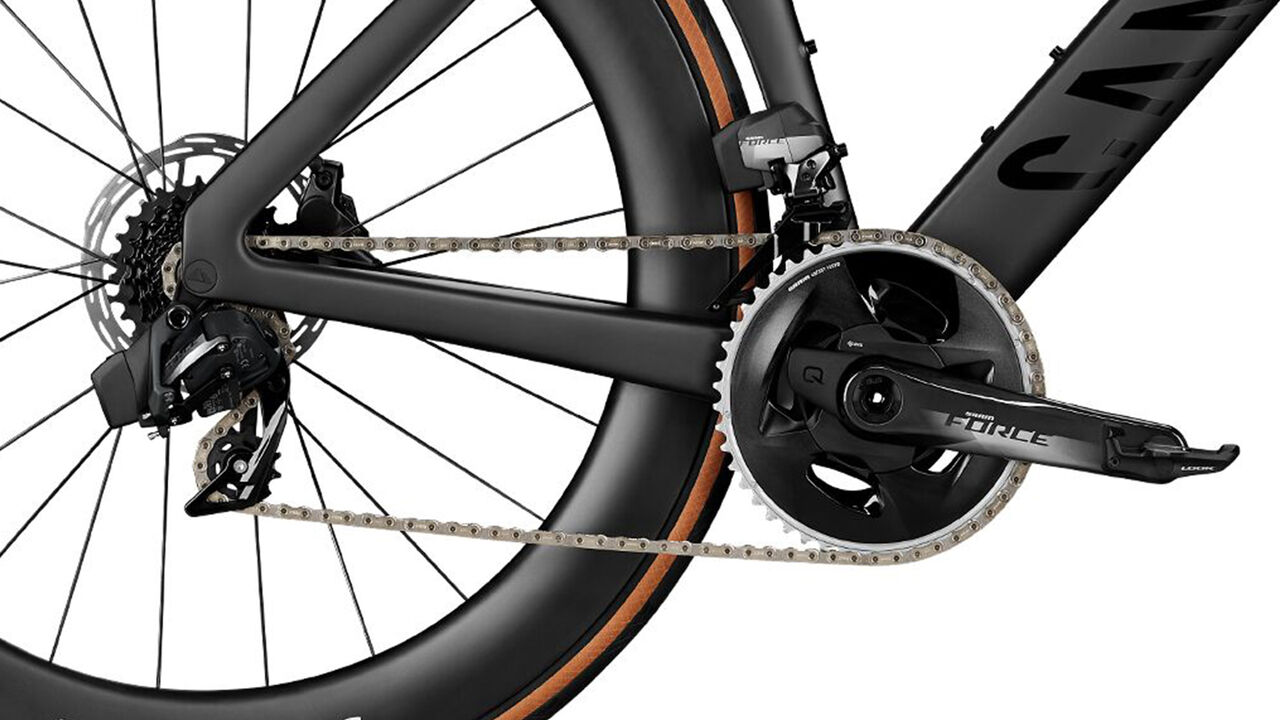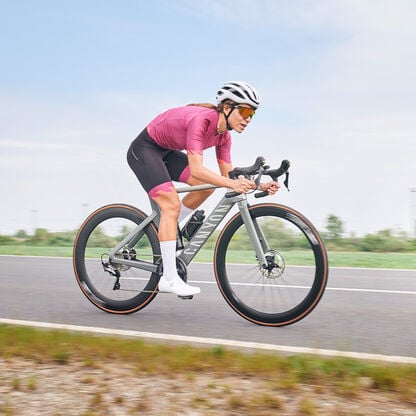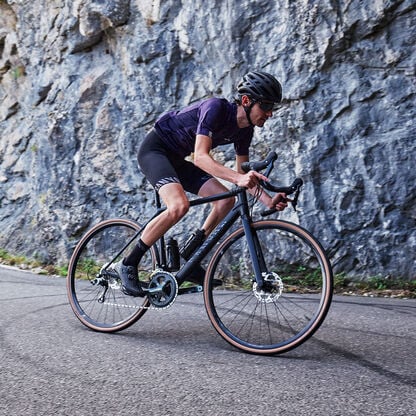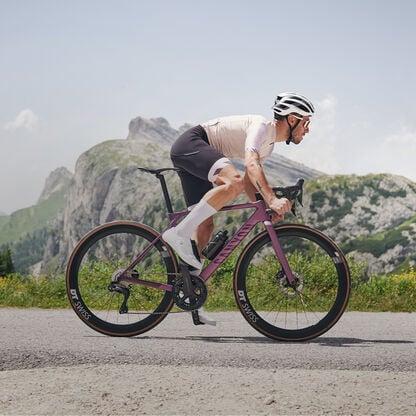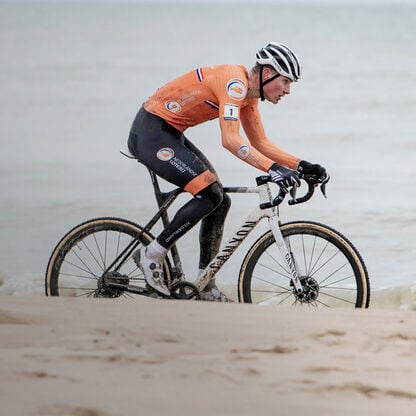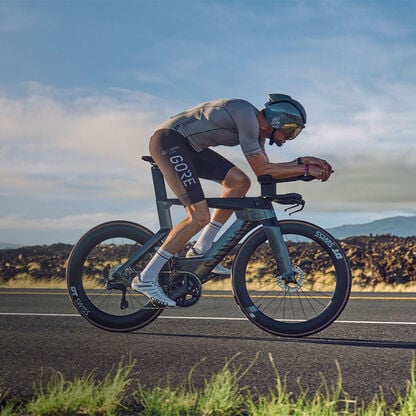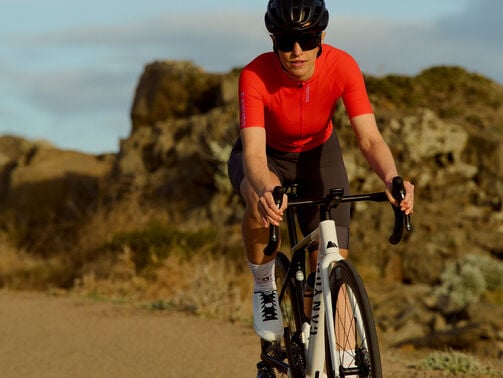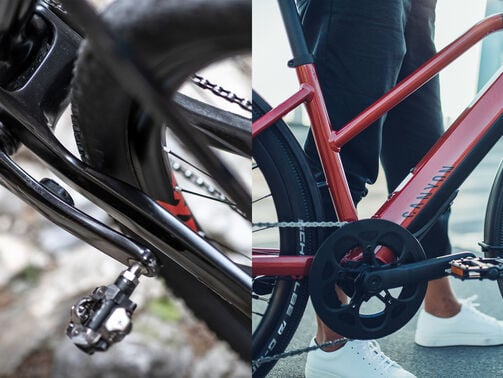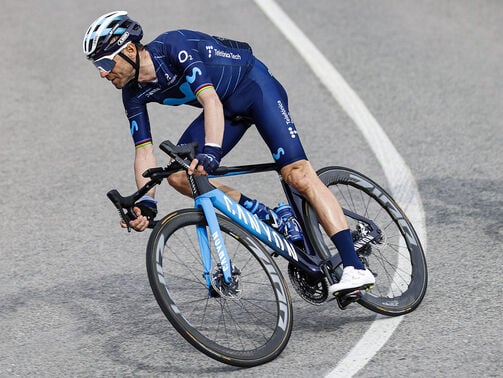Road bike groupsets: Which one is right for you?
Groupsets make your bike go. Here’s what you need to know when buying a new road bike or upgrading your existing one

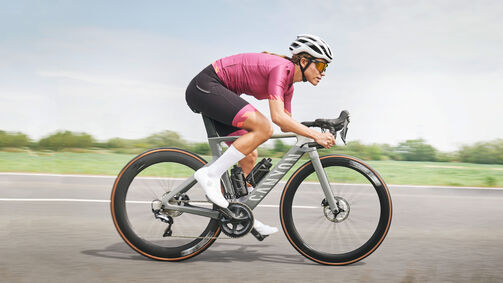
Buying a new bike is filled with so many questions: What bike model should I buy? How much should I spend? But one of the most overlooked questions may be: Which groupset should I go with for my road bike?
Contents
What is a road bike groupset?
A road bike groupset includes brakes and drivetrain components. In essence, the groupset both moves and stops your bike. Without a working drivetrain, your road bicycle would just lean against a wall, pretty to look at, but unable to be pedaled.
Main components of a groupset
The drivetrain consists of shifters, crankset, bottom bracket, chainrings, cassette, chain, and both front and rear derailleurs. As you pedal, the drivetrain moves the bike forward. The brakes (hydraulic or mechanical disc brakes on most newer model bicycles and rim brakes on some newer and most older models) consist of brake calipers and levers. They slow down the bike and bring it to a controlled stop.
How does a road bike groupset work?
Road-bike levers combine braking and shifting in one lever for efficiency; you can control your forward momentum or stopping power without moving your hands off the levers. These levers are ergonomically placed on the curved part of your road bike handlebars. When you want to shift gears, simply press the levers inward, and the derailleurs will engage (Discover our road bike technique stories with pro tips on shifting gears and braking with confidence.)
For many decades, mechanical shifting was the only option for road bikes. However, over the last decade or so, electronic road bike shifting has become available as alternative, providing a consistently precise function with perfect gear changes.
Most road groupsets will be a 2-by setup, with two chainrings on the crankset. In this case, a signal from one of the brake/gear levers is sent to either the front or rear derailleur via a cable, wire, or wireless mechanism. This pushes the chain onto the desired chainring.
Compact, Mid-Compact and Standard are common size options for 2-by cranksets.
- Compact has 50 teeth on the large chainring and 34 on the small chainring. The gears therefore offer a more pleasant ride, especially on climbs.
- Mid-Compact has 52 teeth on the large chainring and 36 on the small chainring.
- Standard has 53 teeth on the large chainring and 39 teeth on the small chainring. The standard crankset is often used by professionals.
Tip: If you want to brush up on some basics before diving into the topic of road bike group sets, head over to our beginner's road bike buying guide.

Mechanical vs. electronic groupsets for road bikes
Bike buyers can choose between the two types of gear-shifting systems available, mechanical or electronic. Both work well, but differ in the way the shifting signal is transmitted. Mechanical groupsets use mechanical cables which manually move the derailleur or brake calipers, while electronic ones use an electric cable or wireless signal to do the same.
When it comes to road bikes, mechanical shifting has both advantages and disadvantages.
Pros:
- Mechanical shifting has been around for many decades. It’s a reliable, tried-and-true system.
- If something breaks, parts are relatively inexpensive, and easy to find, replace, and repair.
Cons
- Both derailleurs and calipers will need periodic adjustment as the cables stretch with heavy use. Eventually they’ll need to be replaced, along with the cable housings. Without adjustment and replacement, shifting and braking will seem sluggish and will eventually stop working altogether.
- Internal routing may make changing out cables a bit more difficult.
Like mechanical shifting, electronic groupsets have their own pluses and minuses.
Pros
- Electronic shifting is faster and more precise. You can jump multiple gears without worrying about dropping a chain.
- If you hate the look of cables, wireless shifting gives your road bike a cleaner look.
- Once your derailleurs are dialed in, you shouldn’t have to adjust them for a relatively long time.
- There’s almost zero effort needed to shift gears.
Cons
- You need charged batteries to shift your road bike. (If you’re running a SRAM AXS system and your rear derailleur’s battery dies during a ride, you can swap out the front derailleur battery, which isn’t used quite as often.)
- Roadside repairs may be more difficult if something is wrong with your equipment.
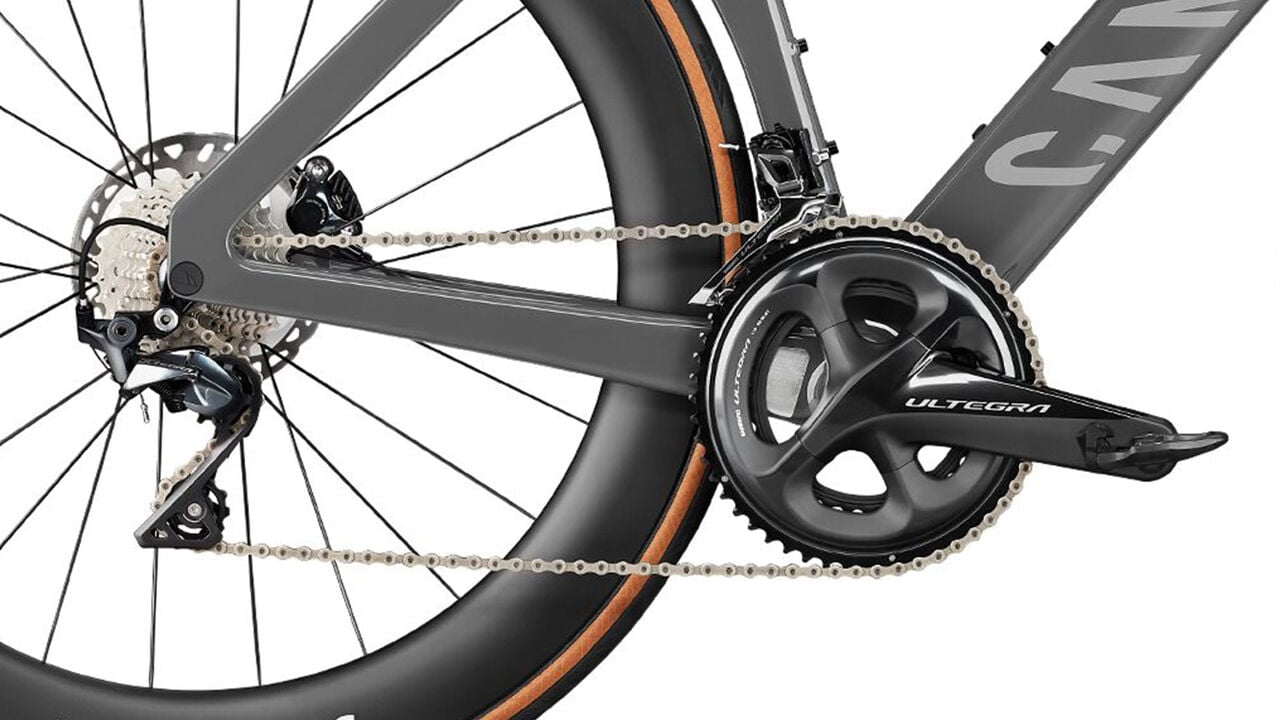
You can currently choose between two gear-shifting systems available in the market, which differ in the way the shifting signal is transmitted:
- mechanical: The signal is transmitted using a system of gear cables
- electronic: A wireless signal or cable transmits the shifting signal
Mechanical shifting is a classic choice for cyclists. These systems are lightweight and easier to repair than other systems if a cable breaks. They are also more affordable. However, the cables tend to wear out after many thousands of gear changes, and the shifting can become heavy if the cables are not routed perfectly. Regular readjustment is necessary to keep the system in good working condition, as the cables stretch over time. After a certain period of use, the cables and outer casings will need to be replaced.
An electronic shifting setup carries out the gear change process using a small electric motor. Once set up, the system works precisely without the need for readjustment. Unlike mechanical systems, practically no effort is required to change gear. There is no need to replace cable wires. Electronic gear-shifting systems enable a very sleek and "clean" look for road bikes.
However, electronic shifting systems require a battery that must be sufficiently charged to operate. A single charge usually lasts for many thousands of gear changes, so you should be safe if you regularly charge the battery. If you run out of battery or the signal isn’t reaching the derailleurs, there’s often no roadside fix available while you’re out.
Road bike groupset hierarchies: Shimano, SRAM, and Campagnolo
There are three major component companies – Shimano, SRAM, and Campagnolo – each offering a variety of bike groupsets at different price points. Typically, the lightest drivetrains are the most expensive; as each groupset’s weight rises, the prices drop.
Shimano road groupsets levels
Shimano's model range is the most extensive. From Dura-Ace to Tiagra, there’s a groupset for virtually any budget or road bike. You’ll find Claris, Sora, and Tiagra groupsets mostly on beginner and lower-tier road bicycles, many of them hybrids. Enthusiast riders typically choose a bike equipped with 105, Ultegra, or Dura-Ace. Shimano also uses a numbering system to indicate hierarchy - the higher the number, the more advanced and higher-quality the component. For example, R9200 (Dura-Ace) sits above R8100 (Ultegra) and R7100 (105), following this pattern across their entire lineup.
Good to know: As long as they have the same number of gears, elements of the different group sets can be combined with each other. So if you have a particular groupset, say Shimano Dura-Ace 12-speed, and want to save money when replacing components, you can use a lower-tier part, say an Ultegra 12-speed cassette, and have no loss of functionality.
12-speed
- Dura-Ace R9200 (electronic)
- Ultegra R8100 (electronic)
- 105 R7100 (electronic/mechanical)
11-speed
- Dura-Ace R9100 / R9120 (electronic/mechanical)
- Ultegra R8000 / R8020 (electronic/mechanical)
- 105 R7000 / R7020 (mechanical)
10-speed
- Tiagra 4700 / 4720 (mechanical)
- 9-speed
- Sora R3000 (mechanical)
8-speed
- Claris 2400 / 2403 (mechanical)
On many of the higher-end groupsets, you can choose an optional power meter attached to the crankset, which will give you a huge advantage during training and racing (Check out Canyon road bike models equipped with Shimano groupsets.)
On many of the higher-end groupsets, you can choose an optional power meter attached to the crankset, which will give you a huge advantage during training and racing (Check out Canyon road bike models equipped with Shimano groupsets.)
SRAM road groupsets levels
SRAM has four models in its range and is best known for its double-tap system: It shifts much like Shimano, but allows you to make larger jumps across the gear range. SRAM was the first manufacturer to offer a 1-by system, which means a crankset with only one chainring. (You’ll find these mostly on cyclocross, gravel, and mountain bike models.) Models come with hydraulic disc brakes.
SRAM's groupset hierarchy is defined by model names rather than numbers, unlike Shimano's groupset lineup, which uses numerical designations to indicate the level of each component. Red is the top-tier, designed for professional cyclists with advanced technology, followed by Force, Rival, and Apex, each offering a balance between performance and price. The higher the model name, the more advanced the components, with Apex being the entry-level option.
12-speed
- Red AXS (electronic)
- Force AXS (electronic)
- Rival eTap AXS (electronic)
- Apex Eagle AXS (mechanical/electronic)
11-speed
- Force (mechanical)
- Rival (mechanical)
SRAM groupsets are typically a touch less expensive compared to their Shimano counterparts (Discover Canyon road bike models equipped with SRAM groupsets here.)
Campagnolo road groupsets levels
Having a Campagnolo-equipped road bike is a lot like owning a fine Italian sportscar; I still own a bicycle with the first-generation electric Campagnolo Super Record components. Commonly called Campy by aficionados, Campagnolo has perhaps the most cache and the best tactile feel of all the various groupsets. You touch the hoods or the drops and you feel like the bike was built just for you.
Campagnolo’s road groupset hierarchy is structured with Super Record at the top, followed by Record, Chorus, Centaur. Each step down offers a more affordable option with slightly fewer advanced features, similar to Shimano and SRAM's tiered systems.
Campagnolo offers five models, from Super Record to Centaur, most with disc brakes as an option.
12-speed
- Super Record Wireless (electronic)
- Super Record S Wireless (electronic)
- Record (mechanical)
- Chorus (mechanical)
11-speed
- Centaur (mechanical)
The major drawbacks of Campy groupsets is the cost and availability; you’re paying a premium for both the enhanced feel and the Campagnolo name. (Campagnolo did release a lower-priced Super Record S line, meant to compete on a cost level with other manufacturers’ top groupsets.)
Good to know though that Campagnolo road groupsets are generally more widely available in Europe than in the US and few American bike shops keep a full range of Campy parts in stock, so if something breaks on your bike, you may have to wait for the part to be shipped and delivered.

What groupset for road bikes is best?
Shimano is probably the most widely used groupset of the three. No matter where you are in the world, you can almost assuredly find Shimano or at least Shimano-compatible parts. SRAM has a wide availability across the Europe and US bike industry as well. Campagnolo doesn’t have the same market presence in the US, but brings a certain panache that the other two brands, as good as they are, don’t quite have.
Overview of road bike groupset tiers: Entry-level to High-end
So what groupsets can you expect to find in your budget in the Canyon road bike range?
Entry-level road groupsets options
If your new-bike budget falls in the 3,000 euro or less range – say one of the Endurace 6 or Ultimate 7 offerings – you’ll likely find SRAM Rival or Shimano Tiagra or 105 on those bikes. At the top of the range, you may get lucky and find a bike with a Rival eTap or 105 Di2 groupset. These road bikes will be made of carbon fiber or aluminum and weigh a bit more than their pricier counterparts. But you’re still getting an expertly engineered bike that will still have you at the front of the pack.
Mid-range sweet spot
Road bikes between 4,000 and 7,000 euros will feature mostly electric groupsets, typically SRAM Force eTap and Shimano Ultegra Di2, like Inflite CF SLX. These road bicycles – typically CF SLX models – will feature a higher grade of carbon fiber and even better components, sometimes even a power meter.
High-performance road groupsets setups
If your budget allows you to spend more than 7,000, you’ll likely have your pick of top-of-the-line groupsets, namely SRAM Red eTap and Dura Ace Di2. These will be CFR speed machines (Canyon Factory Racing bikes developed with intense athletic collaboration, like Aeroad CFR or Speedmax CFR) built with the very best and lightest carbon fiber, typically coming with carbon-fiber wheels and power meters as well.
How to choose the right road bike groupset
You can’t really go wrong with any of the three, so choosing your road bike’s groupset is a matter of personal preference. I typically chose Shimano for most of my road bikes – my Campy-equipped bicycle not withstanding – because I’ve ridden Shimano most of my riding career and the shifting and feel is second nature to me.
But I typically choose SRAM mechanical for my cyclocross bikes, which require me to make huge gear jumps and take more abuse on the course. I have friends who proudly deck their bikes out in Campagnolo components and themselves in Campy-branded apparel. Just choose the groupset that resonates with you the most.
All that said, if I was getting a deal on an amazing Canyon Ultimate CF SL 7 with SRAM instead of Shimano components, I wouldn’t hesitate to buy it. Likewise, if I got my hands on an Inflite CF SL 6 with a Shimano electric groupset, I would happily race it forever.
Discover our Road Bikes
Did this article help?
Thank you for your feedback
-
 About the author
About the authorRobert Annis
Robert Annis is an award-winning outdoor-travel journalist. As an experienced writer and sport enthusiast he writes content that is inspiring with focus on road biking. You might have read Robert's articles in Bicycling, National Geographic, Outside, Travel + Leisure, Inside Hook, AARP, Midwest Living, Sierra, Hemispheres, Departures, Lonely Planet, Afar, Los Angeles Times, Chicago Tribune, RV Magazine, and Hidden Compass.
